Stay in the know on all smart updates of your favorite topics.
Are you interested in the experiences of others working in smart city projects and organizations? The Smart City Academy provides available knowledge about smart city projects and can help you with project development. This Smart City Academy page provides you with information and researches about the impact and conditions of smart city projects. Professors, teachers and students study the initiation, management, collaboration and scaling of smart city projects and would like to share these results with you. They do so by organizing events and masterclasses, by developing smart city tools and methodologies and by making research and outcomes accessible. You can find everything here. And the good news is.... You can add your knowledge too! Are you working on Smart City research? Please feel free to share your knowledge in the Academy section, under ‘Other research and theses’. The Smart City Academy is powered by the Amsterdam University of Applied Sciences. If you have any questions, you can contact smartcityacademy@hva.nl
How to live with global warming larger then 3 degrees C

In my previous post (in Dutch) I summarized the main conclusions of the IPCC's Final Report: The probability that the world will have warmed by more than three degrees by 2100 is much greater than that we hold it at 1 1/2 degrees Celsius. In this post I will discuss the consequences of this for the world, whether there is still a way out and what the consequences are for Dutch policy.
Lunch Pensant UPALMERE!
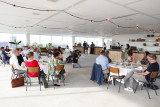
Are you a start-up, scale-up or innovative company and would you like to discuss relevant themes with other innovative entrepreneurs in order to grow and scale? Then you are cordially invited to register for the UPALMERE! lunch Pensant 2023!
After a successful Diner Pensant in 2022, UPALMERE! we organize a second edition this year. This time it will be in the form of a lunch, or Lunch Pensant, from 12.00 – 14.00 in Almere. Participate in this attractive Lunch Pensant with 'nice conversations and delicious dishes at the table'. Be inspired by interesting guest speakers, talk and think along about innovative challenges, expand your network, enjoy the delicious food and musical accompaniment of the lunch!
Who wants to be at this Lunch Pensant for?
This edition is extra special and exclusively intended for startups & scale-ups located in the Amsterdam Metropolitan Area.
Clothing Swap Event @Gast Art!
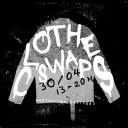
Your closet is feeling a tad musty? Got some cool trash clothes you don’t wear anymore, and want to get some pre-loved items in return? Come hang out, have a beer, listen to some music, make connections and renew your wardrobe!
No ticket required!
🗓️ April 30
⏰ 1pm - 8pm
📍 Gasthuismolensteeg 3, Amsterdam
Instructions:
1. Bring items you don’t wear anymore
2. Exchange for tokens
OR purchase tokens for 2,50€
3. Use tokens for second-hand clothes, curated by us and swapped by other participants
OR use tokens for drinks
4. Brag to your friends about how sustainable your new wardrobe is
Kodingsdag: Coding Day at Le Wagon

Kodingsdag: Coding Day at Le Wagon
Registration required on Eventbrite!
After Koningsdag 👑 comes Kodingsdag 👩💻- a full morning of coding dedicated to all who want to gain new in-demand tech skills 🚀
Join us on campus on April 29th for a workshop fit for the future tech royalty!
Learn how to code your first Landing Page or build your first Machine Learning model with Python - all while celebrating in the spirit of King's Day!
And the best part? This workshop is completely free, so you don't have to spend a dime. Sign up now and start building your kingdom of tech! 💻
Le Wagon Open House: Discover our bootcamps

Le Wagon Open House
Meet our team, learn more about our Web Development and our Data Analytics and Data Science Bootcamps, and discover our Amsterdam Campus!
Registration required on Eventbrite!
Meet our team, learn more about our Web Development and our Data Analytics and Data Science Bootcamp, and discover our Amsterdam Campus! The perfect opportunity to ask us any questions you have about learning new tech skills, our financing options, the application process, job outcomes, the community, and anything else you can think of!
Waardecreatie met data & AI: naar een concrete roadmap voor jouw onderneming
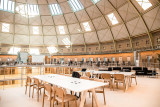
Lang werd kunstmatige intelligentie (oftewel artificial intelligence, AI) vooral als als technologie van de toekomst gezien. Inmiddels is AI een realiteit in ons dagelijks bestaan én in het bedrijfsleven. De recente populariteit van gebruiksvriendelijke tools zoals ChatGPT, Midjourney en Teachable Machine onderstrepen dat nog eens.
AI-toepassingen op het gebied van efficiëntie, besparing en innovatie kunnen mkb’ers veel profijt opleveren. Bijvoorbeeld op het gebied van maatwerk, vroegtijdige en nieuwe inzichten, planning, automatisering, procesoptimalisatie en storingsreductie. Nu AI gemeengoed wordt, is het essentieel om de kansen en uitdagingen te begrijpen.
Bij veel ondernemers roept deze technologie vragen op.Zoals: Voor welke uitdagingen in mijn bedrijf kunnen data en AI mogelijk een oplossing bieden? Waar moet ik rekening mee houden? Waar begin ik als ik data en AI wil inzetten in mijn bedrijfsstrategie? Hoe passen andere bedrijven in mijn sector AI toe? Wat zijn de voordelen en risico’s?
Ben je mkb-ondernemer en zoek je antwoord op dit soort vragen? Meld je dan aan voor de workshop Waardecreatie met data & AI voor jouw onderneming: eerste stappen naar een concrete roadmap.De workshop is ontworpen om jou te helpen bij het verkennen van de mogelijkheden van data en AI, en je de kennis en handvatten mee te geven voor het maken van een plan van aanpak.
We ontvangen je graag op woensdag 7 juni van 12.30 tot 17.00 bij Cupola XS in de Koepel in Haarlem.
Aanmelden kan via dit formulier. Deelname is kosteloos, maar er kunnen maximaal vijftien bedrijven meedoen dus wees er snel bij want vol = vol. Per bedrijf kunnen tot twee personen deelnemen.
Programma
- Inloop met koffie en broodje
- Welkom door de NL AIC en ROM InWest
- AI-quiz: begrip van belangrijkste termen en achtergrond
- Inspiratie: praktijkvoorbeelden van twee ondernemingen
- Zelf aan de slag:
- Uitdagingen die zich goed lenen om te worden opgelost met data en AI
- Ontwikkeling van een innovatievisie en -strategie met data en AI
- Onder begeleiding van een team van experts een roadmap ontwikkelen om binnen jouw onderneming de eerste stappen te zetten met data en AI.
- Afsluiting en borrel
De workshop is een initiatief van de Nederlandse AI Coalitie om samen met regionale partners AI toegankelijker te maken voor het mkb. In deze terugblik op de voorgaande editie van de workshop lees je meer over het initiatief. De workshop is geschikt voor mkb-partijen uit alle sectoren. Neem gerust contact op als je twijfelt of deelname voor jou relevant is. Voor vragen kun je terecht bij Annekaat van Welsem: annekaat.vanwelsem@nlaic.com.
Ontwikkeld door: Mooncake AI, NL AIC
Regionale partner: ROM InWest. De locatie is beschikbaar gesteld door Cupola XS, de techcampus voor digitalisering van het mkb. Met begeleiding van Datacraftsman uit Haarlem en Active Collective uit Beverwijk en concrete voorbeelden van toepassing van Semmtech uit Hoofddorp en Quantillion uit Amsterdam.
Curious about AI? What about the future of the creative industry?

Are you a creative and curious how the advent of AI might impact you, your work, your world? For a whole afternoon we will delve into Artificial Intelligence. We’re curious about its significance for the creative industry. Will it change the creative field as we know it? Transform the lives of creatives? And shape the future for the whole sector?
In a jam packed afternoon full of demo's and discussions we will explore these topics. Ethics, Art, Skills, Energy Impact, DIY, IP, technology, they are all on the agenda.
Be curious. Come join. Your input is necessary.
Entrance free, limited tickets
Smart cities/ Urban planning Internship.
Hi everyone,
I am currently in my Final year of of a BSc in City Planning and Environmental Policy in University College Dublin. I am also planning on doing a masters in Urban design and Planning.
I want to pursue an internship opportunity for the summer months of 2023 (June-August). Does anyone have any information on any companies/ projects that are willing to take interns within Europe?
I am super passionate about sustainable development and the urban environment and would love to gain experience in my feild!
Thanks so much in advance!
Slimme Stad Parade 2023 - 25 mei 2023 in Den Bosch

Er zijn zoveel smartcity-initiatieven dat je soms de bomen door het bos niet meer ziet. En daarom brengen we op 25 mei 2023 in 's-Hertogenbosch alle bomen bij elkaar. Wil je weten welke innovatieve smartcity-initiatieven er zijn die bijdragen aan een leefbare en slimme en sociale stad? Dan mag je de Slimme Stad Parade op 25 mei in het provinciehuis van Noord-Brabant in 's-Hertogenbosch niet missen!
Tijdens dit unieke evenement krijg je de kans om kennis te maken met alle smartcity-initiatieven in Nederland en Vlaanderen. Ontdek welke slimme oplossingen er zijn voor het sociaal domein en hoe we de verstedelijkingsopgaven van de toekomst kunnen oppakken. En leer wat digitalisering en technologisering betekent voor de maatschappelijke opgaven van vandaag.
Dus, wil je weten welke smartcity-initiatieven er zijn die bijdragen aan een betere wereld? Wil je het hele bos kunnen overzien? Kom dan naar de Slimme Stad Parade op 25 mei in het provinciehuis van 's-Hertogenbosch en laat je inspireren!
We starten om 11.00 uur met het officiële programma met een welkomstwoord door de provincie Noord-Brabant en de voorzitters van de twee stuurgroepen. Daarna volgen er pitches tot in de middag. Om 14.45 uur hebben we een theoretische break met professor Albert Meijer over hoe je innovatieve samenwerkingen opschaalt. Een onderwerp dat heel belangrijk is voor beide City Deals en alle andere smartcityinitiatieven.
Klik hier voor het hele programma.
Aanmelden voor de Slimme Stad Parade
Datum: 25 mei 2023, 10.00 - 17.00 uur (inloop 10.00- 11.00 uur). Aansluitend is er een smartcityfeest, waarvan de locatie nog bekend wordt.
Locatie: Provinciehuis 's-Hertogenbosch, Brabantlaan 1, 5216 TV 's-Hertogenbosch.
<strong>Kosten</strong>: Deelname aan de Slimme Stad parade is gratis, voor het feest en eten rekenen we een betaalde toegang.
Wil je op de ochtend van het evenement een badge ontvangen?* Meld je dan aan via de volgende link.
Aanmelden voor de Slimme Stad Parade
Praktische informatie
Parkeren: Je kunt het beste parkeren bij Transferium Pettelaarpark. Vanaf het Transferium is het ongeveer 10 minuten lopen naar het Provinciehuis. Meer info is te vinden op denboschregion.nl
OV: Vanaf het station 's-Hertogenbosch reis je of met een OV-fiets of met de bus. Bekijk hier alle bussen.
* Meld je je lastminute (vanaf 9.00 uur op woensdag 24 mei 2023) aan of meld je je ter plekke aan? Dan schrijven we je handmatig in met een blanco badge.
AMS Startup Booster 2023 - Call for applications is open until April 2nd
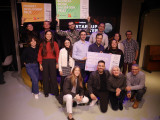
When:
Call for applications is open until April 2nd. The program will last from April 2023 until early July 2023.
What:
The AMS Startup Booster is a business idea development and validation program hosted by AMS Institute, aiming to help aspiring entrepreneurs turn their gut feeling into a business. The entrepreneurs are expected to pursue an impact-driven startup in the field of urban tech.
Lasting 3 months, the AMS Startup Booster 2023 will start on April 14th and run until early July 2023. The program will be hybrid, mainly physical at the AMS Institute (Marineterrein, Amsterdam). The program is most effective when all teams are fully committed so during the aforementioned time period there is a minimum requirement of 8 hours per week for each startup.
How: Building blocks of the AMS Startup Booster program
The program consists of key components that help prepare for a successful start-up:
- An entrepreneurship curriculum with more than 20 workshops & masterclasses
- Mentoring by Industry experts & successful entrepreneurs
- Access to cutting-edge research by AMS Institute experts
- Connections & Insights into how public organizations work through our partnership with Gemeente of Amsterdam
- Lifelong access to online entrepreneurship & pitching courses
- Office space & Makerspace
- 1K Credit for Miro
- Cost & equity free
Workshops & Masterclasses by renowned professionals
Through a series of workshops and masterclasses offered by renowned professionals & business experts, we take your startup idea from a concept to a validated business model. During these workshops, the following topics will be addressed:
- Research Fundamentals & Problem Definition
- Market Segmentation & Customer Personas
- Customer Discovery
- Value Proposition & Business Model Design
- MVP Design & Prototyping
- Experiment Design
- Pitching
In addition, our complimentary masterclasses will cover topics such as Team Fit & Alignment, Marketing & Branding, IP Rights, Finance & Funding, and many more. Peer-to-peer sessions and 1-on-1 coaching will complete the free services we offer to the selected startups. In total, the startups will get a 360 entrepreneurship curriculum consisting of more than 30 workshops & masterclasses.
Demo Day: Pitch & win fantastic prizes
We close off the program with a Demo Day during which the teams showcase their business ideas and prototypes to a broad audience of experts, investors, and entrepreneurs and compete for a list of amazing prizes! Prizes include:
- A prize of €5000 euros cash for product development
- An in-kind prize of €10.000 for a feasibility experiment in the testing area of Marineterrein Amsterdam Living Lab
- Access to follow-up programs & funding opportunities from AMS Institute & founding partners (WUR & TU Delft)
- Additional customer discovery sessions & continuous coaching & mentoring
- Office Space & Makerspace
- Promo material & access to a large network of public and private AMS Partners
In addition, connections with other programs and potential investors will be made.
For whom?
We are looking for ambitious students, researchers and young professionals who have an awesome business idea that could impact city life and solve metropolitan challenges. Please note we are looking for teams not a single founder.
Registration
Apply for the AMS Startup Booster via this form. Applications should be submitted no later than April 2nd.
InnoBuyer: Looking for public and private organisations with challenges to solve

InnoBuyer is an EU-funded project that brings together public and private organisations (Challengers) and innovative companies (Solvers) to jointly co-create innovative solutions, and speed-up the process leading to a concrete innovation procurement.
The Call for Challenges is open to public and private buyers, with specific challenges to solve, lacking the expertise and resources to address them, but willing to co-create innovative solutions with SMEs.
Applications can be submitted by the 31st of March 2023 at 17:00 CET.
For more information about the call and to apply visit:
https://innobuyer.eu/challengers/
Workshop Florerende Wijkeconomie

Hier brengen we de Donuteconomie in praktijk in onze wijk Slotervaart. Volgende week woensdagmiddag worstelen we op de Buurtdonutdag met de vragen en oplossingen voor:
- Welke welvaart willen en kunnen we vergroten in en vanuit onze buurt?
- Hoe kunnen we beter sparen en waarin kunnen we investeren?
- Hoe laten we het geld langer lokaal circuleren?
- Hoe zorgen we voor een structurele transvestering naar onze lokale maatschappelijke sector?
Amsterdam entrepreneurs and SMEs invited to join Impact Deals and become more sustainable

Are you an Amsterdam-based entrepreneur, or do you work for an SME? And do you want to make your company more sustainable? Then draw up a proposal for an Impact Deal before 24 February and receive support from the City of Amsterdam.
What is an Impact Deal?
The City of Amsterdam (Amsterdam Impact) is looking for 10 Amsterdam companies that want to take concrete steps in 2023 towards becoming more sustainable or increasing their social impact.
In an Impact Deal, the entrepreneur and the municipality agree to increase that company's impact by, for example, reducing CO2 emissions by 30 per cent or hiring five job seekers at a distance from the labour market.
The deal must be as concrete as possible, and the entrepreneur should define goals, activities and outcomes. The municipality provides support by offering access to its network and consultations on topics such as financing and access to European funds.
Who is behind the Impact Deals project?
Amsterdam Impact and MKB Amsterdam are the initiators of Impact Deals. The project is part of Local Green Deals, created by the European Commission's Intelligent Cities Challenge.
Want to learn more and submit your Impact Deal proposal?
Visit the Impact Deals page (in Dutch) on the website of the City of Amsterdam.
Doe mee aan versnellingsprogramma GO!-NH voor duurzaam ondernemers
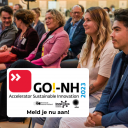
Ben jij een mkb’er, startup of scale-up die wil bijdragen aan een schone, duurzame en gezonde wereld? Dan weet je als geen ander hoe lastig het soms kan zijn om je idee of product aan de man te brengen. En je bent niet de enige! Provincie Noord-Holland heeft speciaal voor ondernemers zoals jij het GO!-NH versnellingsprogramma ontwikkeld om je te helpen bij het op de markt brengen en opschalen van jouw innovatieve, duurzame product of dienst. Ons doel is om jou te helpen impact te maken op de maatschappij!
GO!-NH biedt drie verschillende versnellingsprogramma’s die aansluiten bij de fase en omvang waarin je bedrijf zich bevindt: het Accelerator versnellingsprogramma voor startups, het Growth programma voor bedrijven die in de volgende fase zitten en willen groeien, en het Scale programma voor scale-ups en grotere mkb die nieuwe markten aan willen boren.
In 3 tot 6 maanden word je verder geholpen met trainingen, tools en professionele coaching door experts. GO!-NH zorgt er ook voor dat je jouw innovatie kunt presenteren aan serieuze investeerders, partners, potentiële klanten en andere relevante partijen in de markt.
Ook meedoen?
Er zijn al tien succesvolle edities van GO!-NH afgerond, en maar liefst 140 bedrijven hebben met hulp van GO!-NH inmiddels hun duurzame innovaties versneld kunnen ontwikkelen. Om mee te doen moet je aan een aantal voorwaarden voldoen.
Je bedrijf is actief in Noord-Holland én in een van de volgende sectoren:
- Energietransitie
- Duurzame Mobiliteit
- Duurzame landbouw en voedsel
- Circulaire Economie
Daarnaast wordt van je verwacht dat je gedurende het versnellingsprogramma (die tussen de 3 en 6 maanden duurt) tijd en mankracht kan vrijmaken voor je deelname. Veel ondernemers gingen je voor en allemaal zijn ze het erover eens: alle tijd die je erin steekt krijg je dubbel en dwars terug!
Let op! De inschrijving voor de Accelerator en het Growth programma sluit op maandag 30 januari!
Schrijf je nog snel in voor versnellingsprogramma GO!-NH
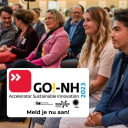
Ben jij een mkb’er, startup of scale-up die wil bijdragen aan een schone, duurzame en gezonde wereld? Dan weet je als geen ander hoe lastig het soms kan zijn om je idee of product aan de man te brengen. En je bent niet de enige! Provincie Noord-Holland heeft speciaal voor ondernemers zoals jij het GO!-NH versnellingsprogramma ontwikkeld om je te helpen bij het op de markt brengen en opschalen van jouw innovatieve, duurzame product of dienst. Ons doel is om jou te helpen impact te maken op de maatschappij!
GO!-NH biedt drie verschillende versnellingsprogramma’s die aansluiten bij de fase en omvang waarin je bedrijf zich bevindt: het Accelerator versnellingsprogramma voor startups, het Growth programma voor bedrijven die in de volgende fase zitten en willen groeien, en het Scale programma voor scale-ups en grotere mkb die nieuwe markten aan willen boren.
In 3 tot 6 maanden word je verder geholpen met trainingen, tools en professionele coaching door experts. GO!-NH zorgt er ook voor dat je jouw innovatie kunt presenteren aan serieuze investeerders, partners, potentiële klanten en andere relevante partijen in de markt.
Ook meedoen?
Er zijn al tien succesvolle edities van GO!-NH afgerond, en maar liefst 140 bedrijven hebben met hulp van GO!-NH inmiddels hun duurzame innovaties versneld kunnen ontwikkelen. Om mee te doen moet je aan een aantal voorwaarden voldoen.
Je bedrijf is actief in Noord-Holland én in een van de volgende sectoren:
- Energietransitie
- Duurzame Mobiliteit
- Duurzame landbouw en voedsel
- Circulaire Economie
Daarnaast wordt van je verwacht dat je gedurende het versnellingsprogramma (die tussen de 3 en 6 maanden duurt) tijd en mankracht kan vrijmaken voor je deelname. Veel ondernemers gingen je voor en allemaal zijn ze het erover eens: alle tijd die je erin steekt krijg je dubbel en dwars terug!
Let op! De inschrijving voor de Accelerator en het Growth programma sluit op 30 januari!
Lees alles rustig na op de website van GO!-NH.
X-mas makersnight special

This evening we will have some Xmas-ideas and materials for you to work on, as to not only (learn to) use the machines & sensors, but also take home a souvenir (it would help if you already have Inkscape installed if you want to make the xmas tree decorations with your name in it:-)
Of course you can also work on your own projects with likeminded and discuss your challenges, or learn to work with Raspberry Pi or work on a prototype to 3Dprint etc. Manuals are available (but also on Youtube) and we have a lot of fun little projects to work on!
Digitale rechten in tijden van Corona - film en nagesprek

Amsterdam is een van de steden die actief werk maakt van de digitale rechten van haar inwoners als de Coronacrisis toeslaat. In een wereld die ongekend anders is, blijkt dat het vechten voor digitale rechten nog even zo van belang blijkt als voorheen. Misschien wel urgenter.
De film start om 19u45 en duurt tot 20u15. Na de film gaan we met elkaar en de hoofdpersonen uit de film in gesprek. Voor wie wil, is er van 21 tot 23u een borrel.
Aanmelden via https://www.amsterdam.nl/formulieren/innovatie/film-gesprek-corona-digitale-rechten-8/
Deze filmvertoning maakt deel uit van de week rond digitale rechten (5-11 december) in Amsterdam:
Lezing - Leven zonder afval

Leven zonder afval
Wil jij ook leven zonder afval? In deze lezing vertelt Elisah Pals, oprichter van Zero Waste Nederland, hoe je het klimaat een handje helpt door je leefstijl aan te passen. Pals geeft je tips en tricks hoe je je ecologische voetafdruk verkleint, minder CO2 uitstoot, meer zelf maakt en minder weggooit. Goed voor het klimaat én je portemonnee. Daarnaast vertelt ze over het ontstaan van Zero Waste Nederland en hoe zij zelf al 5 jaar lang geen nieuwe spullen kocht.
Over Elisah Pals
Elisah Pals is klimaatpsycholoog en oprichter van Zero Waste Nederland. Ze heeft een fascinatie voor menselijk gedrag en hoe je dat op een positieve manier kunt beïnvloeden.
Tickets
Voor een bezoek aan dit programma in De Studio reserveer je een apart ticket. De toegangsprijs is € 7,50. Het programma is inclusief een bezoek aan de tentoonstelling Energy Junkies. Reserveer hier ticket.
Locatie en tijd
De lezing start om 20.00 uur en duurt ongeveer 1 uur. Voorafgaand aan de lezing kun je vanaf 19.00 uur de tentoonstelling Energy Junkies bezoeken.
De Studio van NEMO is een extra locatie van NEMO Science Museum op het Marineterrein in Amsterdam. De programmering is speciaal voor volwassenen. Adres: Kattenburgerstraat 5, gebouw 027A in Amsterdam. Volg de bordjes vanaf de hoofdingang aan de Kattenburgerstraat.
Dialoog/game - Climate Privilege Walk

Foto: Pexels - Susanne Jutzeler
Climate Privilege Walk
De gevolgen van klimaatverandering treffen iedereen op een andere manier. En gezinnen met een hoger inkomen kunnen zich vaak beter beschermen tegen de negatieve effecten van milieuvervuiling.
In de Climate Privilege Walk ontdek je hoe het is om in de schoenen van een ander te staan. Op basis van jouw persoonlijke situatie beantwoord je verschillende vragen over energie en klimaat. Heb jij ooit een rekening niet kunnen betalen door de stijgende energieprijzen? Of moet de verwarming soms hoger zetten omdat het tocht in je huis? Maak jij je zorgen omdat iedereen in 2050 van het gas af moet?Afhankelijk van je antwoord op een vraag zet je een stap naar voren, blijf je staan, of zet je een stap naar achter. Aan het eind van de Climate Privilege Walk wordt door de afstand tussen de deelnemers duidelijk hoe groot de ongelijkheid is.
Over Sarita Bajnath
De Climate Privilege Walk wordt verzorgd door Sarita Bajnath. Zij is trainer, spreker en motivator op het gebied van inclusie, diversiteit en dialoog. Ze werkt zowel nationaal als internationaal voor bedrijven, NGO's, universiteiten en hogescholen.
Tickets
Voor een bezoek aan dit programma in De Studio reserveer je een apart ticket. De toegangsprijs is € 7,50. Het programma is inclusief een bezoek aan de tentoonstelling Energy Junkies. Reserveer hier ticket.
Locatie en tijd
De privilege walk start om 20.00 en 21.30 uur en duurt ongeveer 1 uur. In de ticketportal kun je het tijdstip kiezen wat jou het beste uitkomt. De privilege walk om 20.00 uur zal Nederlandstalig zijn en om 21.30 Engelstalig. Voorafgaand aan de activiteit kun je vanaf 19.00 en 21.00 uur de tentoonstelling Energy Junkies bezoeken.
De Studio van NEMO is een extra locatie van NEMO Science Museum op het Marineterrein in Amsterdam. De programmering is speciaal voor volwassenen. Adres: Kattenburgerstraat 5, gebouw 027A in Amsterdam. Volg de bordjes vanaf de hoofdingang aan de Kattenburgerstraat.
Futures Literacy workshop - Dé toekomst bestaat niet!

Foto: Pixabay
Futures Literacy Workshop - De toekomst bestaat niet!
Nadenken over de toekomst beïnvloedt de beslissingen die we nu maken. En als we het hebben over klimaatverandering, denken we vaak aan de toekomst. Daarom is het de hoogste tijd om eens onder de loep te nemen op wat voor manieren we een toekomstbeeld kunnen creëren en wat daarbij de valkuilen zijn.
Er zijn verschillende manieren om over de toekomst na te denken. Van nature zijn we geneigd om één dominant toekomstbeeld te gebruiken. Aan de hand van dat toekomstbeeld maken we vervolgens beslissingen in het heden. Het probleem is dat we andere mogelijkheden daardoor (te) snel over het hoofd zien en steeds dezelfde keuzes blijven maken.
Tijdens deze avond maak je kennis met de 21th skills van de Futures Literacy methode die een andere manier van denken introduceert. Hoe denken wij dat de toekomst eruitziet? En hoe hopen we hoe die eruitziet? De antwoorden op deze twee vragen zijn doorgaans heel verschillend, maar waarom is dat zo?
Door de onzekerheid van de toekomst te omarmen kun je eigenaarschap krijgen over iets dat er nog niet is. Dit klinkt bijna paradoxaal of onmogelijk. Want hoe kun je een toekomst die nog niet bestaat gebruiken om nu te innoveren? Wat gebeurt er als wij open staan de toekomst te onderzoeken en ons niet laten verlammen door complexiteit en aannames uit het heden?
Wil jij ook leren om opener over de toekomst na te denken? Kom dan naar deze bijzondere avond in De Studio van NEMO. Het proces en de vraagstukken die tijdens deze avond voorbijkomen worden in beeld gebracht door een illustrator en krijg je ook nagestuurd.
Over Loes Damhof en Futures Literacy
Tijdens de workshop kom je op een laagdrempelige en speels manier in aanraking met de Futures Literacy methode die door UNESCO is uitgeroepen tot dé essentiële vaardigheid die nodig is voor onze 21e eeuwse problematiek.
Binnen de leerstoel Futures Literacy wordt onderzoek gedaan naar de manier waarop we kijken naar de toekomst. Loes Damhof, introduceerde deze methode in het Nederlandse hoger onderwijs en leidt het Futures Literacy team aan de Hanzehoogschool in Groningen. Speciaal voor deze avond reist ze af naar Amsterdam om deze nieuwe methode in een workshop ook beschikbaar te stellen aan de bezoekers van De Studio.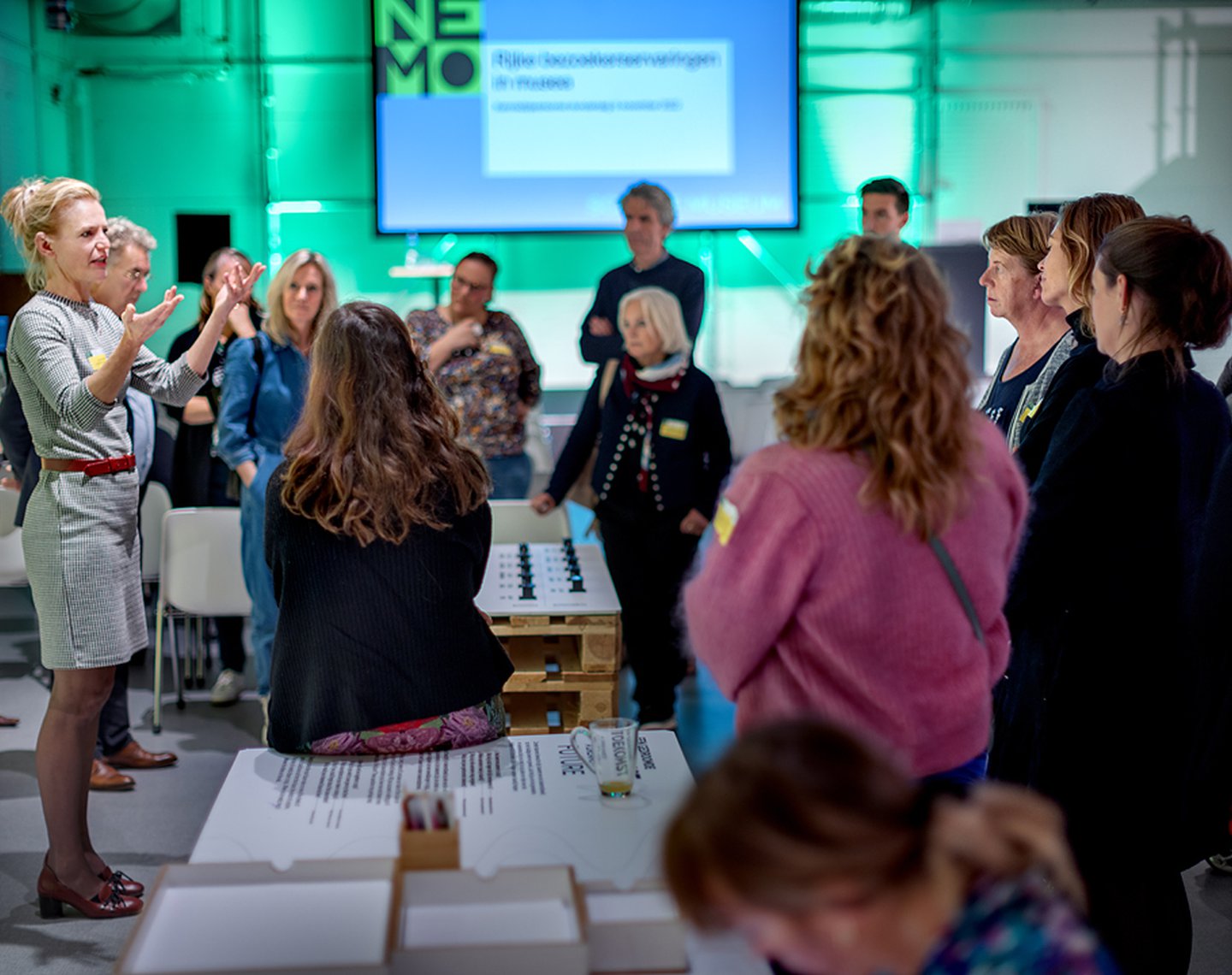
Foto: DigiDaan
Tickets
Voor een bezoek aan dit programma in De Studio reserveer je een apart ticket. De toegangsprijs is € 7,50. Het programma is inclusief een bezoek aan de tentoonstelling Energy Junkies. Reserveer hier ticket.
Locatie en tijd
De workshop start om 20.00 uur en duurt ongeveer 2 uur. Voorafgaand aan de activiteit kun je vanaf 19.00 uur de tentoonstelling Energy Junkies bezoeken.
De Studio van NEMO is een extra locatie van NEMO Science Museum op het Marineterrein in Amsterdam. De programmering is speciaal voor volwassenen. Adres: Kattenburgerstraat 5, gebouw 027A in Amsterdam. Volg de bordjes vanaf de hoofdingang aan de Kattenburgerstraat.
Stay up to date
Get notified about new updates, opportunities or events that match your interests.

